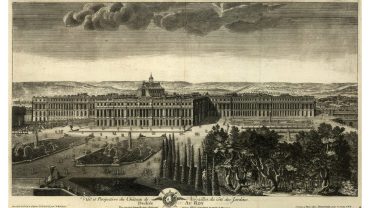The story of Paul Bunyan and his loyal sidekick Babe the Blue Ox has been passed down through generations of outdoorsmen as a symbol of the rugged, larger-than-life frontier spirit.
So was he real, or rather the creation of campfire storytellers with overactive imaginations? Does the story have a petite sprinkling of French-Canadian je ne sais quoi? Are the adventures that have been told and retold thousands of times the exaggerated yarns of the work of ordinary lumberjacks? Or is the story of Bunyan and Babe based on the life of one Fabian Fournier, a Québécois woodsman?
This time-trip back to the nineteenth century attempts to shed light on Paul Bunyan, the legendary, larger-than-life logger.
The Origin of the Story of Paul Bunyan

The Grand Canyon in Arizona (Credit: Shahriar Erfanian, 41 Stories Photography via Getty Images)
Most historians agree that the legend of Paul Bunyan started in the lumber camps around the Great Lakes region of Minnesota, Wisconsin and Michigan. The tales told of a towering giant, an immensely powerful lumberjack renowned for prodigious skill and speed, a voice like thunder, and hands the size of shovels.
And of course the more the stories were told, the more fantastical they became.
One version suggests he was born in the northeast state of Maine (others include Bemidji in northern Minnesota, Hayward, Wisconsin, and Oscoda, Michigan), and while most babies were delivered by one stork, baby Bunyan was so large, five were required. In later tales, he’s said to have dug the Mississippi River and created Puget Sound. One giant swipe of his axe opened up the Grand Canyon, and the footprints of his trusty companion Babe the Blue Ox filled with water and became Minnesota’s 10,000 Lakes.
Talking of his companion, another version of the story told that blue snow fell over Maine one winter and – as Paul went outside to investigate – he saw a baby ox stuck in the snow. He took the animal inside to warm it up and its hair stayed blue, hence Babe the Blue Ox. The pair have stayed together for as long as the story has remained in American folklore.
What’s in a Name?

Did the name 'Paul Bunyan' originate in Quebec? (Credit: Posnov via Getty Images)
Like much of the story, the origin of the name Paul Bunyan is shrouded in debate. The most commonly held belief is that it’s an Anglicised version of the Québécois phrase ‘bon yenne’, used to express surprise or exclamation, roughly translating to “Good heavens!”
One theory is that the surname derived from the English word ‘bunion’, itself from the Old French bugne, referring to a big lump or swelling. It could have been the surname of one of the loggers telling the stories. Another version of the story, published in 1925 by a writer named James Stevens, suggested that the name was derived from a French-Canadian lumberjack known as Paul Bon Jean, thought to have been a participant in the 1837-38 Papineau Rebellion, where French-Canadians revolted against British rule. Whatever the true history, the name Paul Bunyan stuck.
The Evolution of the Legend

Paul Bunyan and Babe in Bemidji (Credit: Dave Jonasen via Getty Images)
According to a 2009 book called Out of the Northwoods: The Many Lives of Paul Bunyan by Michael Edmonds, oral stories of the giant lumberjack folk hero were doing the rounds for at least three decades before the first known written mention of Paul Bunyan occurred. This was believed to be in a March 1893 edition of the Gladwin County Record, a newspaper from the small city of Gladwin in Michigan. This reference was likely an inside joke among the logging community, as no one outside of that circle would have been familiar with the name.
The Paul Bunyan story gained further traction in the early 20th century, particularly after an uncredited editorial appeared in the Duluth News Tribune in 1904. This editorial mentioned Bunyan’s legendary logging exploits in North Dakota during the year of the “blue snow.” Journalist James MacGillivray, a lumberjack from Oscoda, Michigan, contributed significantly to the popularisation of the Paul Bunyan tales with a more detailed story published in The Detroit News in 1910, helping to introduce the tale to a broader audience.
But it was through the work of former-logger-turned-creative-ad-man William B. Laughead who worked for the Red River Lumber Company where the story of Paul Bunyan became entrenched in the American psyche. In 1914, Laughead created a series of promotional pamphlets featuring the giant lumberjack as a symbol of the company’s expertise. These pamphlets exaggerated Bunyan’s feats and added elements like the blue ox. Laughead’s efforts helped transform Bunyan into a national folk hero. They were distributed across the country, reaching audiences far beyond the logging camps where the stories first began.
By the 1930s, as other towns looked to capitalise on the story of Paul Bunyan, local festivals, tourist attractions, and celebrations of all things Bunyan were organised all over the country, and his image was used to advertise everything from wood to bread.
By using Paul and Babe in advertising, the legend was further exaggerated and spread through print media, children’s books, and even cartoons, making him an enduring figure in American folklore. His image as a giant lumberjack folk hero, a towering symbol of American ruggedness and the pioneering frontier spirit, was cemented, and he evolved into one of the most iconic characters in US cultural history.
Was Paul Bunyan Based on Fabian Fournier?

Fournier was killed on the coast of Lake Huron (Credit: grandriver via Getty Images)
Some historians think the inspiration for the legend of Paul Bunyan comes from a French-Canadian lumberjack named Fabian Fournier, who was born in Quebec and later emigrated to Michigan. It’s by no means a universally held view however, with other historians and commentators suggesting the stories about Paul Bunyan were around long before Fournier found fame.
Probably born in the 1840s, Fournier was thought to be well over six feet tall and was a renowned hard-drinking brawler rumoured to have had a double row of teeth. His party trick was said to be taking huge bites from planks of wood.
Fournier was killed in a fight probably in 1875 or 1876 in Bay City on the coast of Lake Huron in Michigan and the death led to a high-profile trial which may have helped spread Fournier’s fame and may have helped form the core of the Bunyan legend.
The Famous Bunyan Statue

Paul Bunyan and Babe the Blue Ox at Trees of Mystery, California (Credit: Mark E. Gibson via Getty Images)
There’s a number of statues of Paul Bunyan and Babe the Blue Ox all over America today, including a 9.4-metre tall statue of the mythical lumberjack in Bangor, Maine, weighing almost 1.7 tonnes. What are thought to be the tallest statues of Paul and Babe in the US, located at the Trees of Mystery tourist attraction in Klamath, California, measure 15-metres and 11-metres respectively.
Yet perhaps the most famous Paul Bunyan statue has been listed on the National Register of Historic Places since 1988. Located at the junction of Third Street and Bemidji Avenue in Bemidji, Minnesota, the statues of Paul and Babe were built in 1937 and designed by Minnesota resident Lennord Pitney. Paul was built by a local builder called Carl Aldal, and Babe by N. Edward Johnson, the owner of the Bemidji Boat Factory. They were constructed not only to honour the legend of Paul Bunyan, but also to attract passing motorists and to promote the town as a tourist hotspot.
The Legacy of Paul Bunyan

Paul Bunyan & Babe (Credit: Holly Cohn (copyright holder For Bob Rashid) via Getty Images)
Ultimately, Paul Bunyan is a figure of folklore, with no evidence to suggest he was ever a real person. However, that hasn’t stopped people from embellishing his story over time, turning the giant lumberjack folk hero into a cultural symbol of American perseverance, strength and ingenuity. His larger-than-life persona continues to captivate audiences, with statues, festivals, and books dedicated to celebrating the mighty logger and his legendary deeds.












